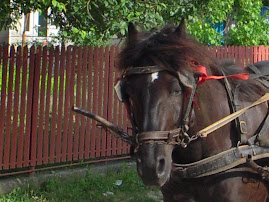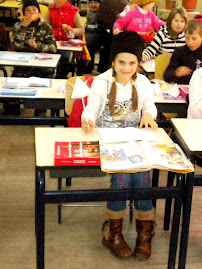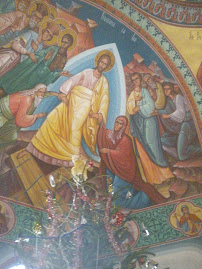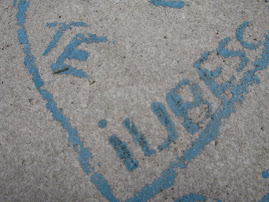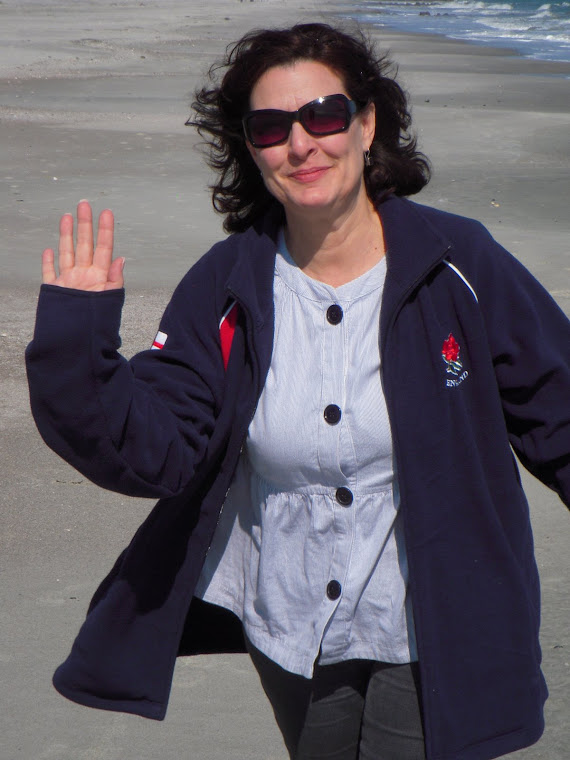 It is my pleasure to be here in this place and to share these times as a Peace Corps volunteer with the Romanian people in Brusturoasa and its surrounding communities. It has been the single most wonderful holiday experience I have ever had. And it couldn’t have come at a better time. Being away from home is harder than I imagined, but life and God (and Santa, too) always seem to bring the gifts that you need the most when you least expect them. Wish you were here. I hope you will enjoy the photos and video at www.photobucket.com and my Facebook page. By the way, our bear “costumes” here in the village as you can see were actual bear skins-paws, teeth and all. Any taxidermist would be proud. The entire event was a unique combination of an “Ancient and Horribles” parade, majestic rodeo-style equine processions, old-fashioned European spirited holiday cabaret chorals in traditional hand-made Romanian dress, hilarious comical renderings with cowbells, flutes, drums and horns along with history-relating theatrical ditties reminiscent of Shakespearean lore both by children and adults. All of it ending off three hours later with American-Indian-like rain dances in the dark accompanied by a Fourth of July fireworks finale above enough to shed light on the snow-covered mountains turning red, blue, and yellow as faces in the crowd watched in amazement. We all walked to our homes together following the procession as it trailed away from a huge mass gathering to variously sized groups of friends, neighbors, and happy children saying goodnight and praising the talents and efforts of all who performed. You really haven’t lived until you’ve paraded with the bears---Fabulously Frenetic!! The following is a portion of an article regarding Romanian Christmas traditions, including the steaua, colinde, and the jocul ursului (bear and comics parade), that occur during the holidays here, some of which are unique to the region of Moldova. The original post can be found at http://www.bucurestiwww.ro The Village Way: Romanian Christmas traditions are based around the idea of time, explains Ion Blajan, head of collections at the Peasant Museum (Muzeul Taranului Roman): the traditional tales and celebrations are based on a 12-day period in which life goes through a chaotic period then starts afresh in the New Year. The practices that surround these traditions are now mostly seen in Northern Romania, around Bucovina and Suceava, and especially in Campulung Moldovenesc. Blajan explains the stories behind them: Romanians believe there is a period of chaos, where the world is broken and anything is possible; dead souls can come back to the earth, and we can communicate between our two worlds, the underworld and the sky. All this is reflected in dancing and songs and parades, and there is no regard for anything serious while it’s going on. Sounds just like a New Year's Eve in London to me! On the last day, when all the celebrations finish, people beat the bushes where they believe dead souls are hiding. They believe the souls must go back to their world or else they’ll threaten people on earth. It may sound like something your mother warned you away from, but the result is a wonderfully creative expression of tradition, with children in amazing costumes, so cleverly constructed and imaginative they could well be on a theatre stage, accompanied by sweet-sounding songs as well as miming and parades. Blajan continues: After the chaos, Christ is born, and from the chaos is born a new world. Children go around with a star and sing songs about the birth of Jesus Christ. Specific activities happen on each of the 12 days, says Blajan: On Christmas Eve the day is very short, and it was thought the sun would die, so a fire is lit on a wheel, which looks like the sun, to help the sun rise again, because without the sun the world would die. On New Year's Eve there are parades in the villages with bands and everyone wears costumes and masks. There are bride and groom masks, which symbolise a new life, and masks of old men and women which represent the old year. Some children dress up as bears – in the past real bears on leashes were led by gypsies in parades, but now sheep or bear skin costumes are used. Often the parade features goats, horses, deer and other animals pulled along on wheels as part of the parade with the band and the rest of the characters in the masks. Then on the last day, January 7th, children go to each house and sing songs about the baptism of St John. *WISHING ALL OF YOU BOTH NEAR AND FAR THE MOST BLESSED OF HOLIDAY SEASONS!
It is my pleasure to be here in this place and to share these times as a Peace Corps volunteer with the Romanian people in Brusturoasa and its surrounding communities. It has been the single most wonderful holiday experience I have ever had. And it couldn’t have come at a better time. Being away from home is harder than I imagined, but life and God (and Santa, too) always seem to bring the gifts that you need the most when you least expect them. Wish you were here. I hope you will enjoy the photos and video at www.photobucket.com and my Facebook page. By the way, our bear “costumes” here in the village as you can see were actual bear skins-paws, teeth and all. Any taxidermist would be proud. The entire event was a unique combination of an “Ancient and Horribles” parade, majestic rodeo-style equine processions, old-fashioned European spirited holiday cabaret chorals in traditional hand-made Romanian dress, hilarious comical renderings with cowbells, flutes, drums and horns along with history-relating theatrical ditties reminiscent of Shakespearean lore both by children and adults. All of it ending off three hours later with American-Indian-like rain dances in the dark accompanied by a Fourth of July fireworks finale above enough to shed light on the snow-covered mountains turning red, blue, and yellow as faces in the crowd watched in amazement. We all walked to our homes together following the procession as it trailed away from a huge mass gathering to variously sized groups of friends, neighbors, and happy children saying goodnight and praising the talents and efforts of all who performed. You really haven’t lived until you’ve paraded with the bears---Fabulously Frenetic!! The following is a portion of an article regarding Romanian Christmas traditions, including the steaua, colinde, and the jocul ursului (bear and comics parade), that occur during the holidays here, some of which are unique to the region of Moldova. The original post can be found at http://www.bucurestiwww.ro The Village Way: Romanian Christmas traditions are based around the idea of time, explains Ion Blajan, head of collections at the Peasant Museum (Muzeul Taranului Roman): the traditional tales and celebrations are based on a 12-day period in which life goes through a chaotic period then starts afresh in the New Year. The practices that surround these traditions are now mostly seen in Northern Romania, around Bucovina and Suceava, and especially in Campulung Moldovenesc. Blajan explains the stories behind them: Romanians believe there is a period of chaos, where the world is broken and anything is possible; dead souls can come back to the earth, and we can communicate between our two worlds, the underworld and the sky. All this is reflected in dancing and songs and parades, and there is no regard for anything serious while it’s going on. Sounds just like a New Year's Eve in London to me! On the last day, when all the celebrations finish, people beat the bushes where they believe dead souls are hiding. They believe the souls must go back to their world or else they’ll threaten people on earth. It may sound like something your mother warned you away from, but the result is a wonderfully creative expression of tradition, with children in amazing costumes, so cleverly constructed and imaginative they could well be on a theatre stage, accompanied by sweet-sounding songs as well as miming and parades. Blajan continues: After the chaos, Christ is born, and from the chaos is born a new world. Children go around with a star and sing songs about the birth of Jesus Christ. Specific activities happen on each of the 12 days, says Blajan: On Christmas Eve the day is very short, and it was thought the sun would die, so a fire is lit on a wheel, which looks like the sun, to help the sun rise again, because without the sun the world would die. On New Year's Eve there are parades in the villages with bands and everyone wears costumes and masks. There are bride and groom masks, which symbolise a new life, and masks of old men and women which represent the old year. Some children dress up as bears – in the past real bears on leashes were led by gypsies in parades, but now sheep or bear skin costumes are used. Often the parade features goats, horses, deer and other animals pulled along on wheels as part of the parade with the band and the rest of the characters in the masks. Then on the last day, January 7th, children go to each house and sing songs about the baptism of St John. *WISHING ALL OF YOU BOTH NEAR AND FAR THE MOST BLESSED OF HOLIDAY SEASONS!Sunday, December 27, 2009
Christmastime is Here...Happiness and Cheer...Olden Times and Ancient Rhymes...Of Love and Dreams to Share...
 It is my pleasure to be here in this place and to share these times as a Peace Corps volunteer with the Romanian people in Brusturoasa and its surrounding communities. It has been the single most wonderful holiday experience I have ever had. And it couldn’t have come at a better time. Being away from home is harder than I imagined, but life and God (and Santa, too) always seem to bring the gifts that you need the most when you least expect them. Wish you were here. I hope you will enjoy the photos and video at www.photobucket.com and my Facebook page. By the way, our bear “costumes” here in the village as you can see were actual bear skins-paws, teeth and all. Any taxidermist would be proud. The entire event was a unique combination of an “Ancient and Horribles” parade, majestic rodeo-style equine processions, old-fashioned European spirited holiday cabaret chorals in traditional hand-made Romanian dress, hilarious comical renderings with cowbells, flutes, drums and horns along with history-relating theatrical ditties reminiscent of Shakespearean lore both by children and adults. All of it ending off three hours later with American-Indian-like rain dances in the dark accompanied by a Fourth of July fireworks finale above enough to shed light on the snow-covered mountains turning red, blue, and yellow as faces in the crowd watched in amazement. We all walked to our homes together following the procession as it trailed away from a huge mass gathering to variously sized groups of friends, neighbors, and happy children saying goodnight and praising the talents and efforts of all who performed. You really haven’t lived until you’ve paraded with the bears---Fabulously Frenetic!! The following is a portion of an article regarding Romanian Christmas traditions, including the steaua, colinde, and the jocul ursului (bear and comics parade), that occur during the holidays here, some of which are unique to the region of Moldova. The original post can be found at http://www.bucurestiwww.ro The Village Way: Romanian Christmas traditions are based around the idea of time, explains Ion Blajan, head of collections at the Peasant Museum (Muzeul Taranului Roman): the traditional tales and celebrations are based on a 12-day period in which life goes through a chaotic period then starts afresh in the New Year. The practices that surround these traditions are now mostly seen in Northern Romania, around Bucovina and Suceava, and especially in Campulung Moldovenesc. Blajan explains the stories behind them: Romanians believe there is a period of chaos, where the world is broken and anything is possible; dead souls can come back to the earth, and we can communicate between our two worlds, the underworld and the sky. All this is reflected in dancing and songs and parades, and there is no regard for anything serious while it’s going on. Sounds just like a New Year's Eve in London to me! On the last day, when all the celebrations finish, people beat the bushes where they believe dead souls are hiding. They believe the souls must go back to their world or else they’ll threaten people on earth. It may sound like something your mother warned you away from, but the result is a wonderfully creative expression of tradition, with children in amazing costumes, so cleverly constructed and imaginative they could well be on a theatre stage, accompanied by sweet-sounding songs as well as miming and parades. Blajan continues: After the chaos, Christ is born, and from the chaos is born a new world. Children go around with a star and sing songs about the birth of Jesus Christ. Specific activities happen on each of the 12 days, says Blajan: On Christmas Eve the day is very short, and it was thought the sun would die, so a fire is lit on a wheel, which looks like the sun, to help the sun rise again, because without the sun the world would die. On New Year's Eve there are parades in the villages with bands and everyone wears costumes and masks. There are bride and groom masks, which symbolise a new life, and masks of old men and women which represent the old year. Some children dress up as bears – in the past real bears on leashes were led by gypsies in parades, but now sheep or bear skin costumes are used. Often the parade features goats, horses, deer and other animals pulled along on wheels as part of the parade with the band and the rest of the characters in the masks. Then on the last day, January 7th, children go to each house and sing songs about the baptism of St John. *WISHING ALL OF YOU BOTH NEAR AND FAR THE MOST BLESSED OF HOLIDAY SEASONS!
It is my pleasure to be here in this place and to share these times as a Peace Corps volunteer with the Romanian people in Brusturoasa and its surrounding communities. It has been the single most wonderful holiday experience I have ever had. And it couldn’t have come at a better time. Being away from home is harder than I imagined, but life and God (and Santa, too) always seem to bring the gifts that you need the most when you least expect them. Wish you were here. I hope you will enjoy the photos and video at www.photobucket.com and my Facebook page. By the way, our bear “costumes” here in the village as you can see were actual bear skins-paws, teeth and all. Any taxidermist would be proud. The entire event was a unique combination of an “Ancient and Horribles” parade, majestic rodeo-style equine processions, old-fashioned European spirited holiday cabaret chorals in traditional hand-made Romanian dress, hilarious comical renderings with cowbells, flutes, drums and horns along with history-relating theatrical ditties reminiscent of Shakespearean lore both by children and adults. All of it ending off three hours later with American-Indian-like rain dances in the dark accompanied by a Fourth of July fireworks finale above enough to shed light on the snow-covered mountains turning red, blue, and yellow as faces in the crowd watched in amazement. We all walked to our homes together following the procession as it trailed away from a huge mass gathering to variously sized groups of friends, neighbors, and happy children saying goodnight and praising the talents and efforts of all who performed. You really haven’t lived until you’ve paraded with the bears---Fabulously Frenetic!! The following is a portion of an article regarding Romanian Christmas traditions, including the steaua, colinde, and the jocul ursului (bear and comics parade), that occur during the holidays here, some of which are unique to the region of Moldova. The original post can be found at http://www.bucurestiwww.ro The Village Way: Romanian Christmas traditions are based around the idea of time, explains Ion Blajan, head of collections at the Peasant Museum (Muzeul Taranului Roman): the traditional tales and celebrations are based on a 12-day period in which life goes through a chaotic period then starts afresh in the New Year. The practices that surround these traditions are now mostly seen in Northern Romania, around Bucovina and Suceava, and especially in Campulung Moldovenesc. Blajan explains the stories behind them: Romanians believe there is a period of chaos, where the world is broken and anything is possible; dead souls can come back to the earth, and we can communicate between our two worlds, the underworld and the sky. All this is reflected in dancing and songs and parades, and there is no regard for anything serious while it’s going on. Sounds just like a New Year's Eve in London to me! On the last day, when all the celebrations finish, people beat the bushes where they believe dead souls are hiding. They believe the souls must go back to their world or else they’ll threaten people on earth. It may sound like something your mother warned you away from, but the result is a wonderfully creative expression of tradition, with children in amazing costumes, so cleverly constructed and imaginative they could well be on a theatre stage, accompanied by sweet-sounding songs as well as miming and parades. Blajan continues: After the chaos, Christ is born, and from the chaos is born a new world. Children go around with a star and sing songs about the birth of Jesus Christ. Specific activities happen on each of the 12 days, says Blajan: On Christmas Eve the day is very short, and it was thought the sun would die, so a fire is lit on a wheel, which looks like the sun, to help the sun rise again, because without the sun the world would die. On New Year's Eve there are parades in the villages with bands and everyone wears costumes and masks. There are bride and groom masks, which symbolise a new life, and masks of old men and women which represent the old year. Some children dress up as bears – in the past real bears on leashes were led by gypsies in parades, but now sheep or bear skin costumes are used. Often the parade features goats, horses, deer and other animals pulled along on wheels as part of the parade with the band and the rest of the characters in the masks. Then on the last day, January 7th, children go to each house and sing songs about the baptism of St John. *WISHING ALL OF YOU BOTH NEAR AND FAR THE MOST BLESSED OF HOLIDAY SEASONS!Just another day in Paradise


To Welcome Me to the Biserica
MISTO!
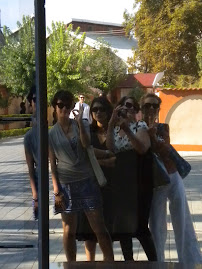
We have surely arrived!
I'm Going to Brusturoasa!

Can't Wait to Meet My New Neighbors
My Wonderful Gazda Family!
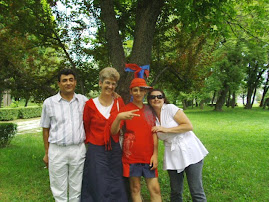
On the Way to the Party on the 4th





